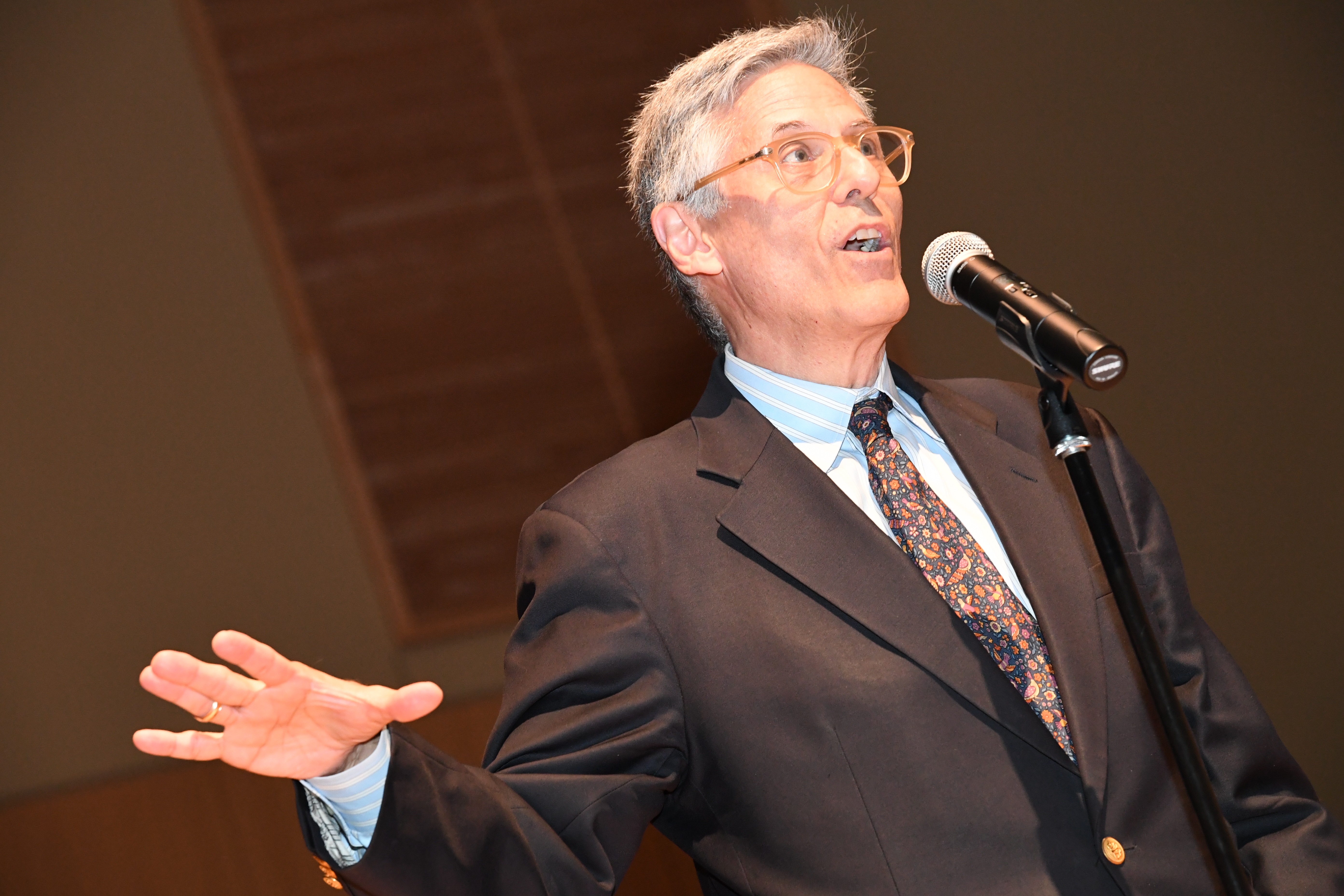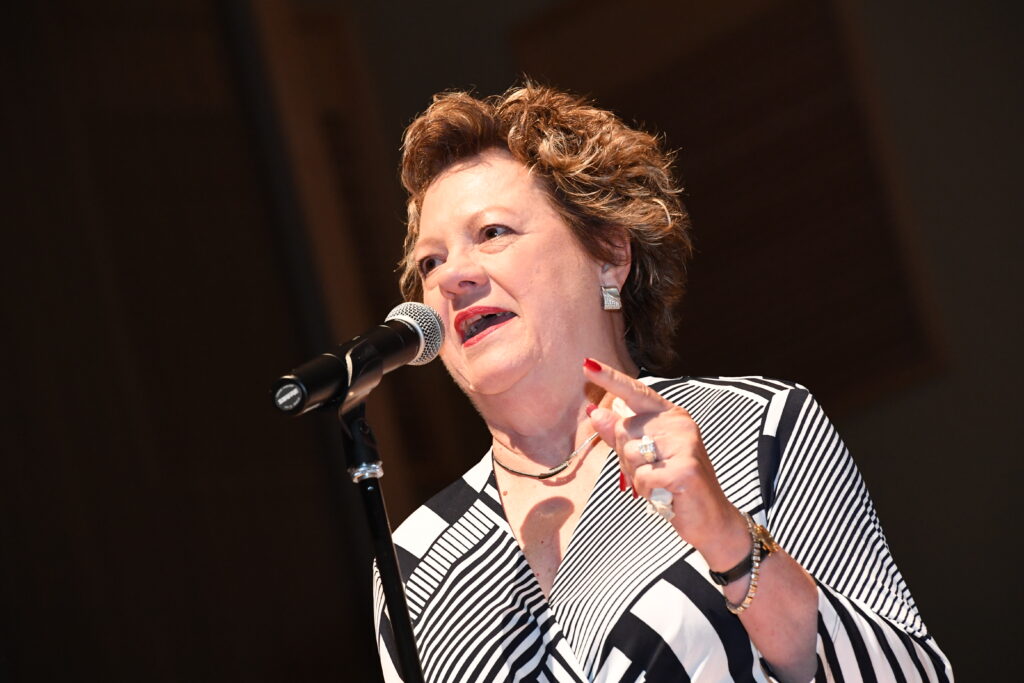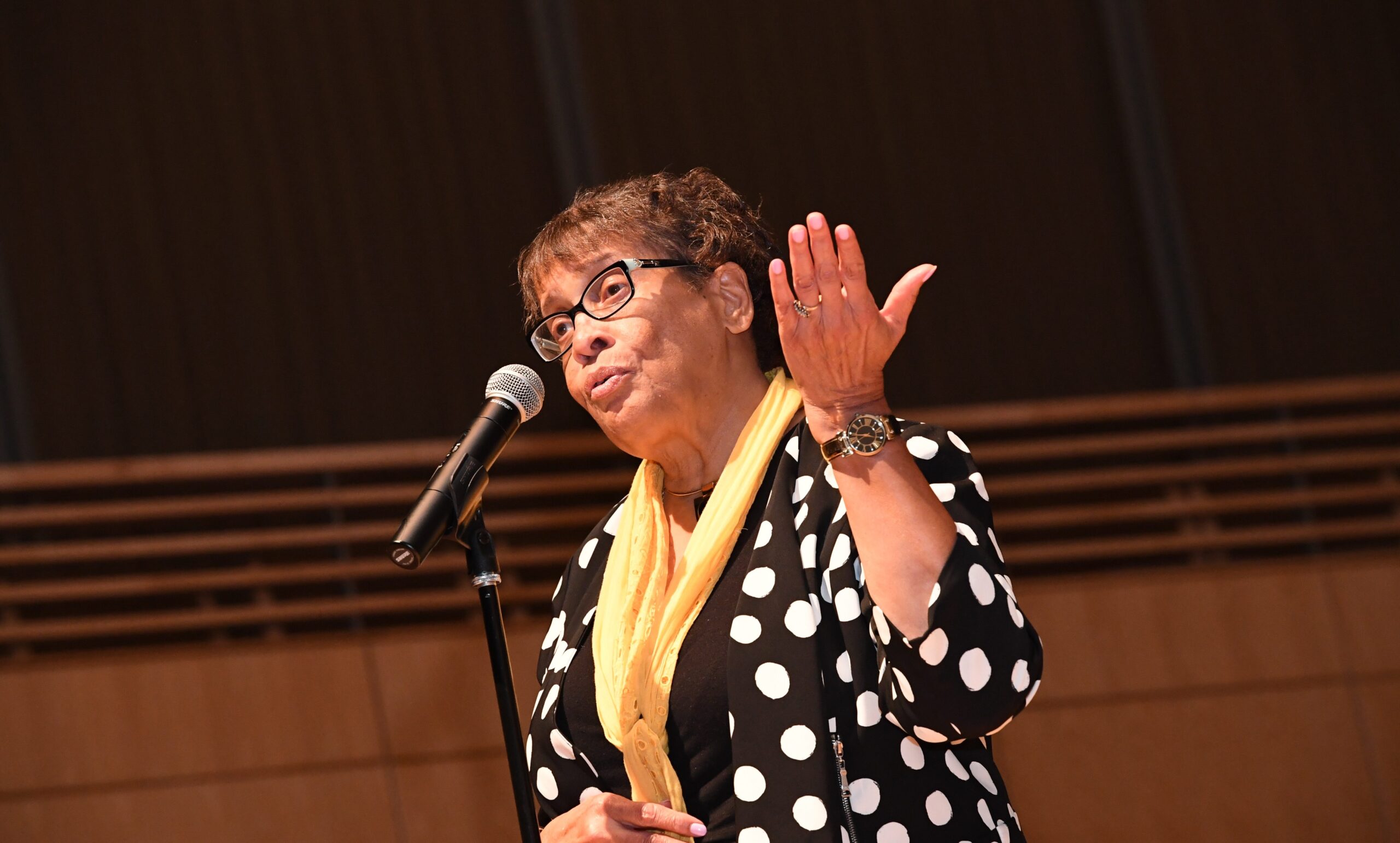On September 19, 1966, 750 freshmen arrived at UMBC and began taking classes in one of three building that made up the campus. Fifty years later, community members gathered together to share their memories of UMBC’s early days in the gleaming, new Linehan Concert Hall. The event was a special UMBC 50th anniversary edition of Baltimore’s popular Stoop Storytelling Series, which features “‘ordinary’ people telling the extraordinary, true tales of their lives.”
Mimi Detreich ‘70, American studies, set the stage by helping the audience imagine what it was like to be a student at UMBC during the first years. “We had professors who we had never heard of before, we had no idea what they were like, and we had no idea that they were really as new as we were to this whole thing,” she said.
When Louie Sowers ‘70, American studies, arrived at UMBC in 1966, she knew that she wanted to play sports in college because she loved playing volleyball during her high school years. At that time, UMBC only offered intercollegiate sports for men. “My sophomore year rolled around, and there were still no women’s sports. I was getting a little nervous because I really wanted to play volleyball, so I decided that I needed to be a little proactive,” she said. Sowers met with the athletic director who told her that if she could collect enough signatures of women interested in playing volleyball, he would hire a coach. “Evidently, I was pretty good at begging people,” she recalled, “because I came back with 66 names, and he hired us a coach.”

Ed Berlin ‘70, history, owner of The Ivy Bookshop in Baltimore, also arrived at UMBC in 1966 and recalls that the UMBC social scene was fairly quiet at first, before the campus began inviting top musicians like Otis Redding and Lou Reed to perform on campus. In those early days, he helped throw a Halloween party, and painted some wooden fences white as part of the decorations. After the party began he heard shrieks from people as they realized there were white stripes on their costumes from leaning against party decor. Being at UMBC was rewarding, he said, “I appreciate every second that I was here.”
In 1966, Simmona Simmons ‘74, American studies, now UMBC’s outreach and special projects librarian, started her first staff position at the library. After taking the state test, she applied to the first job opening that she saw, which happened to be at UMBC. During her time at UMBC, Simmons has seen the library move and expand, and she has continued her education, completing her bachelor’s degree and two master’s degrees. “The whole experience at UMBC was gratifying,” she said. “As UMBC grew, I grew with UMBC.”
Diane Tichnell ‘70, political science, says she arrived at UMBC ready to “wow” the community with her journalism skills. She began working on the school newspaper during her sophomore year, and at first was given small assignments, until her editor asked her to interview the leader of a group coming to campus to give a seminar. “That moment was a life-changing experience for me, when Bobby Seale, the co-founder of the Black Panthers for Self-Defense, started talking to me,” she recalls. “I couldn’t write fast enough to get down everything he said.” Tichnell’s experience at UMBC was one that changed the way she thought about causes. “They are not abstract, they are people who are putting themselves out there for the rest of us.”
When William Rothstein, faculty emeritus of the department sociology and anthropology, was interviewing for the job opening at UMBC, he was told that there was no campus for him to visit, so the interview was conducted in New York City. He was offered the job and began working at UMBC in the fall of 1966, where he continued to teach until he retired in 2013. “The first years at UMBC were notable because most of the faculty were new PhDs, like myself, and not much older than the students,” Rothstein said, adding that there were even faculty-student basketball and softball games. “So many things had to be decided in the early days when you were creating the university, as well as teaching and doing research.”

Donna Banks Hekler ‘70, English, recalled meeting Albin O. Kuhn, the first chancellor of UMBC, in the cafeteria while she was eating lunch with a friend in UMBC’s early days. She spoke about how Kuhn was always interested in hearing about students’ experiences. “He really wanted to know what was working and more importantly, what wasn’t working, what needed to be changed. What did we think?” she said. Heckler shared that Kuhn’s true love was farming, and that when he retired he moved back to his farm. “He planted crops, and he nurtured those and tilled the soil and did the harvest. And he did the same thing here. He planted a university, and he grew it and he nurtured it and he loved it.”
When audience members were offered the chance to come to the stage, John Titchener, emeritus associate professor of philosophy, and Allan Holtzman ‘70, history, also told short stories about their time at UMBC.
The final Stoop Story presenter was President Freeman A. Hrabowski, who jumped forward a few decades to tell a story about the early 1990s, a challenging time for university budgets in Maryland. President Hrabowski shared how, at a moment when arts and humanities programs were at risk, the UMBC campus showed up to support students’ access to a broad liberal arts education. “When times are tough, and it’s about character, people come together,” Hrabowski said. “I’m a strong believer that working class people, middle class people, should be exposed to the best, because they’re going to be the leaders one day.”
Header image: Simmona Simmons speaks at UMBC Stoop Stories event, September 17, 2016. All images by Jim Burger.
Tags: Alumni, AmericanStudies, Athletics, CAHSS, English, History, Hrabowski, Library, Philosophy, PoliticalScience, SAPH, staff, UMBC50

